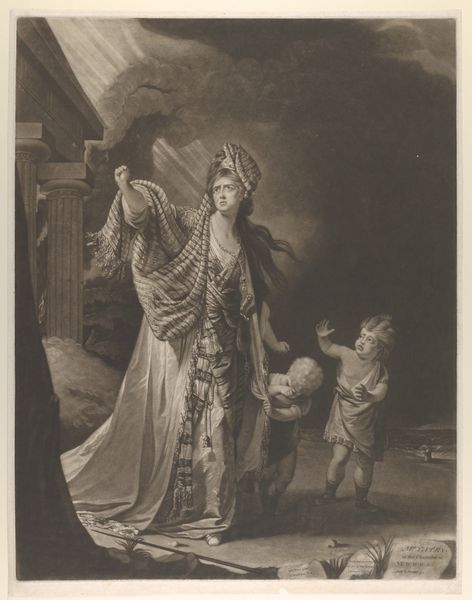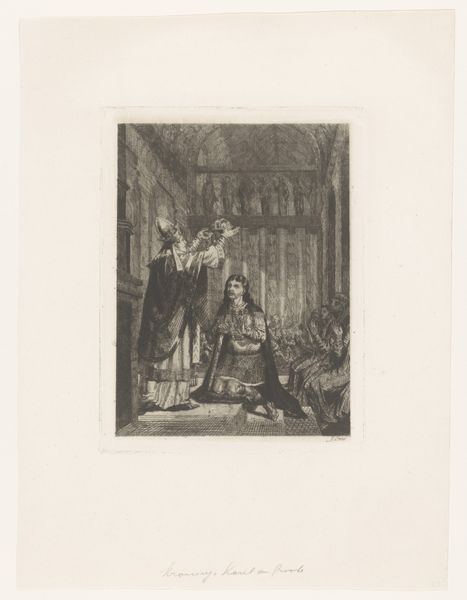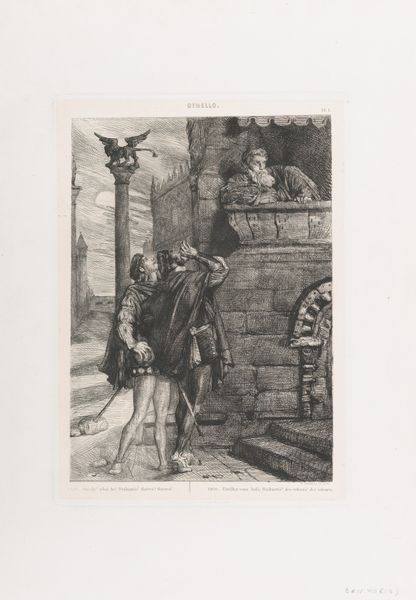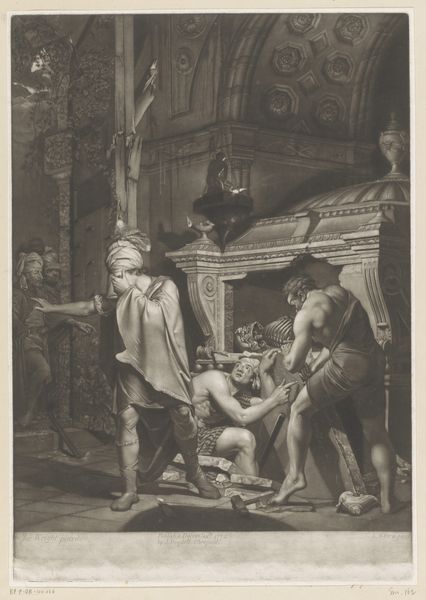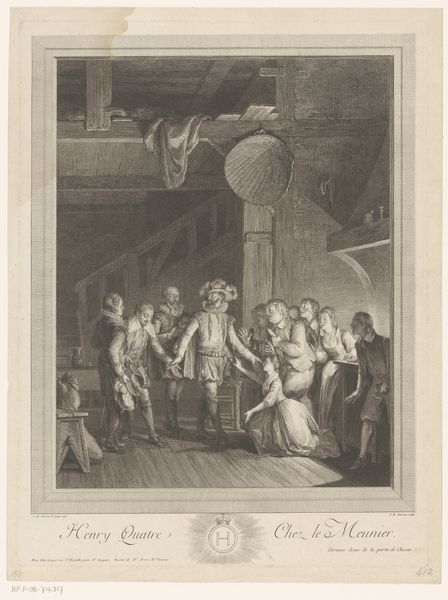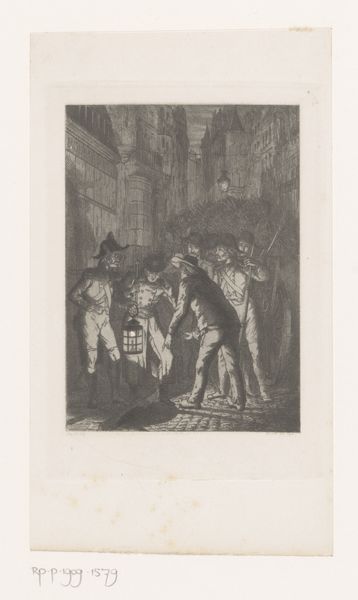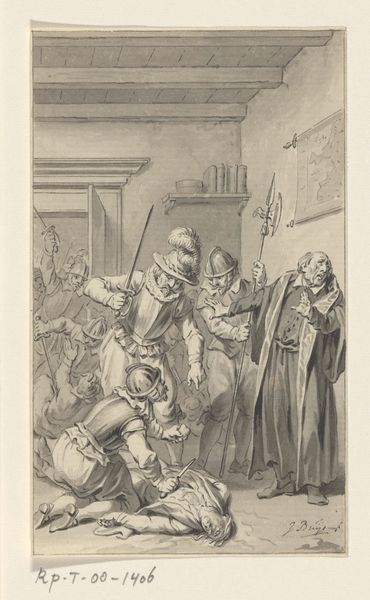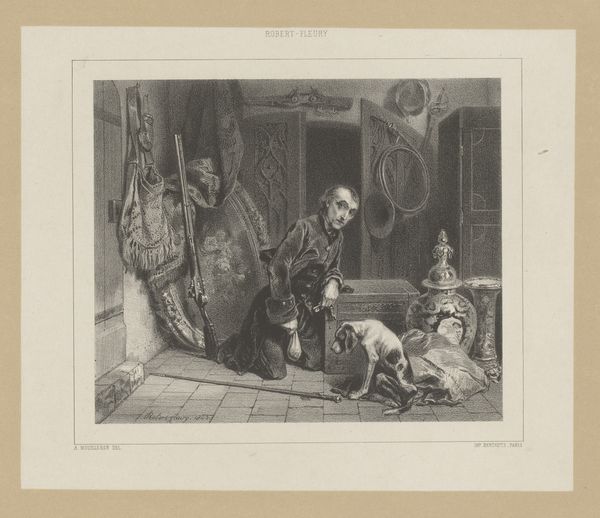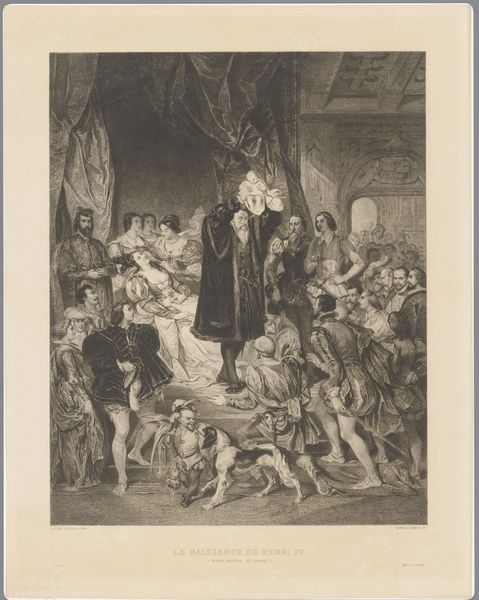
print, engraving
#
portrait
#
narrative-art
#
baroque
# print
#
cityscape
#
genre-painting
#
engraving
Dimensions: height 354 mm, width 254 mm
Copyright: Rijks Museum: Open Domain
Curator: This is “Dronken man wordt ondersteund door twee vrouwen,” which translates to "Drunk Man Supported by Two Women," an engraving by James McArdell, dating from around 1747-1748. Editor: My first thought is how cleverly it uses light and shadow. There’s a real theatricality to it. The drunk man becomes a spectacle, almost a fallen monument. And look at that link boy and the two women attending him; I want to explore what these actors can reveal! Curator: Exactly. McArdell’s engraving reveals a snapshot of social dynamics within a cityscape of the period. The print medium itself, produced with relatively simple and scalable technology for reproduction and consumption, points to a broader audience engaging with moral narratives like this one, and maybe even purchasing such artworks to reinforce their view of the world! Editor: The very act of printmaking fascinates me. The physical labor to produce those fine lines, the paper quality...it’s all about the hand, craft, and trade of art-making during that time! This piece would have required planning and careful execution of tools—each cut into that plate determined what the wider public saw. Consider also, what material processes would lead McArdell to adopt narrative art like this, instead of pure portraiture? Curator: This reminds us of how deeply integrated art was within social frameworks. Prints circulated ideas widely, commenting on contemporary issues of class and morality—all within the expanding culture of urban life. The print serves almost as social commentary: to witness such a scene becomes a form of social engagement. Editor: And I think what stands out for me are not just the techniques involved in this print's creation, but what materials enabled these figures to become an accessible "experience" within a public audience. Engraving allowed those with means and knowledge of art to access different moral compasses by investing or working as patrons themselves, while observing its effects elsewhere--and how, specifically through processes of line-making, labor practices get recorded for display in social contexts themselves.. Fascinating! Curator: Absolutely. A lens through which we see art becoming an active agent in shaping perceptions of class and behaviour during a particular period. Editor: Ultimately, by considering the print itself, we get to imagine who may have bought and displayed "Drunk Man"-- and ultimately imagine which values and systems came with engaging in the art itself, making us complicit with a scene even when we might deem its meaning long gone.
Comments
No comments
Be the first to comment and join the conversation on the ultimate creative platform.
